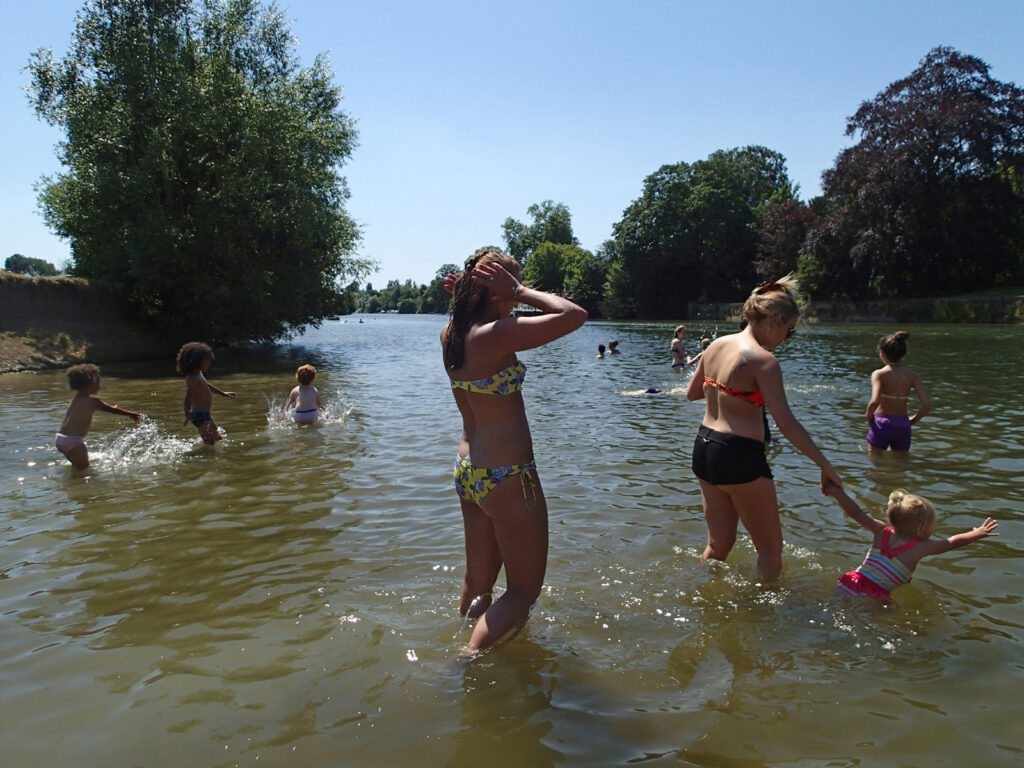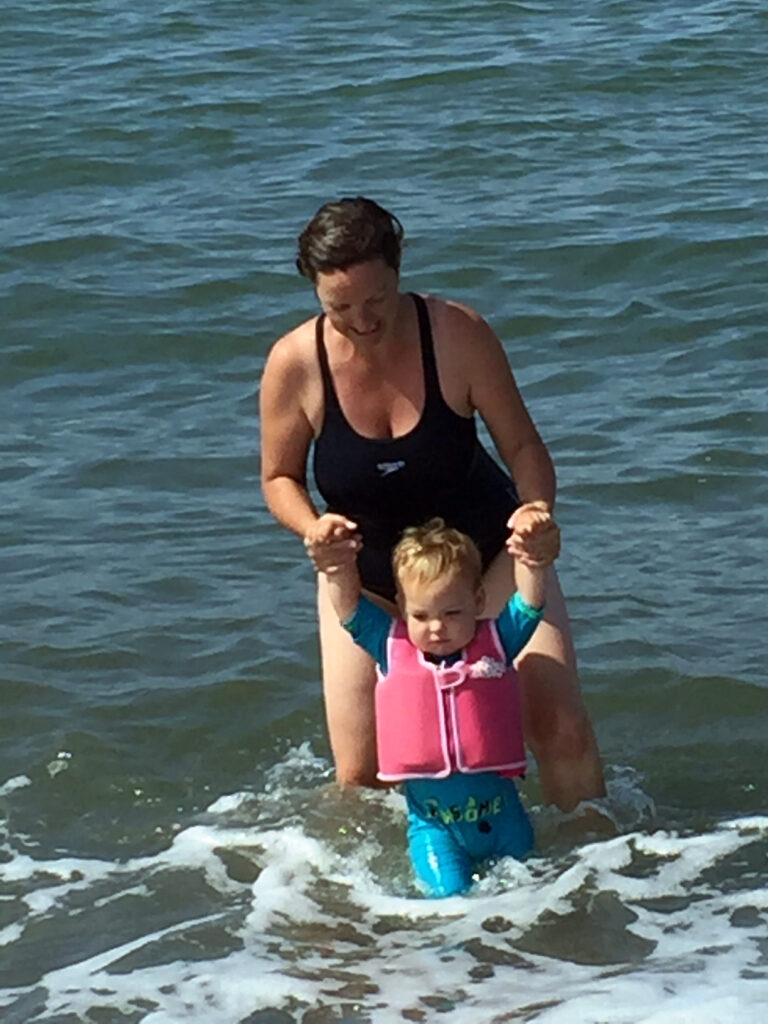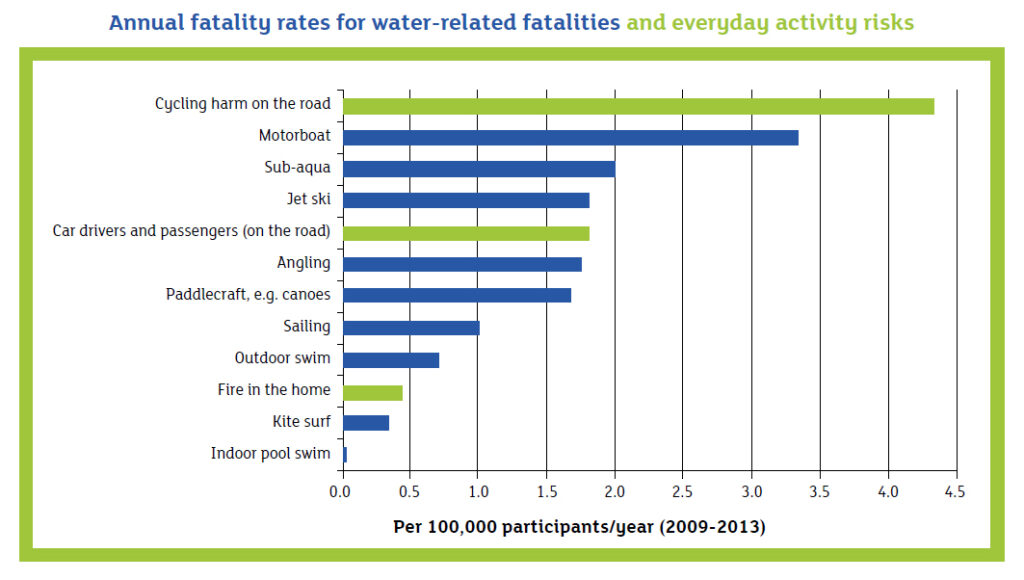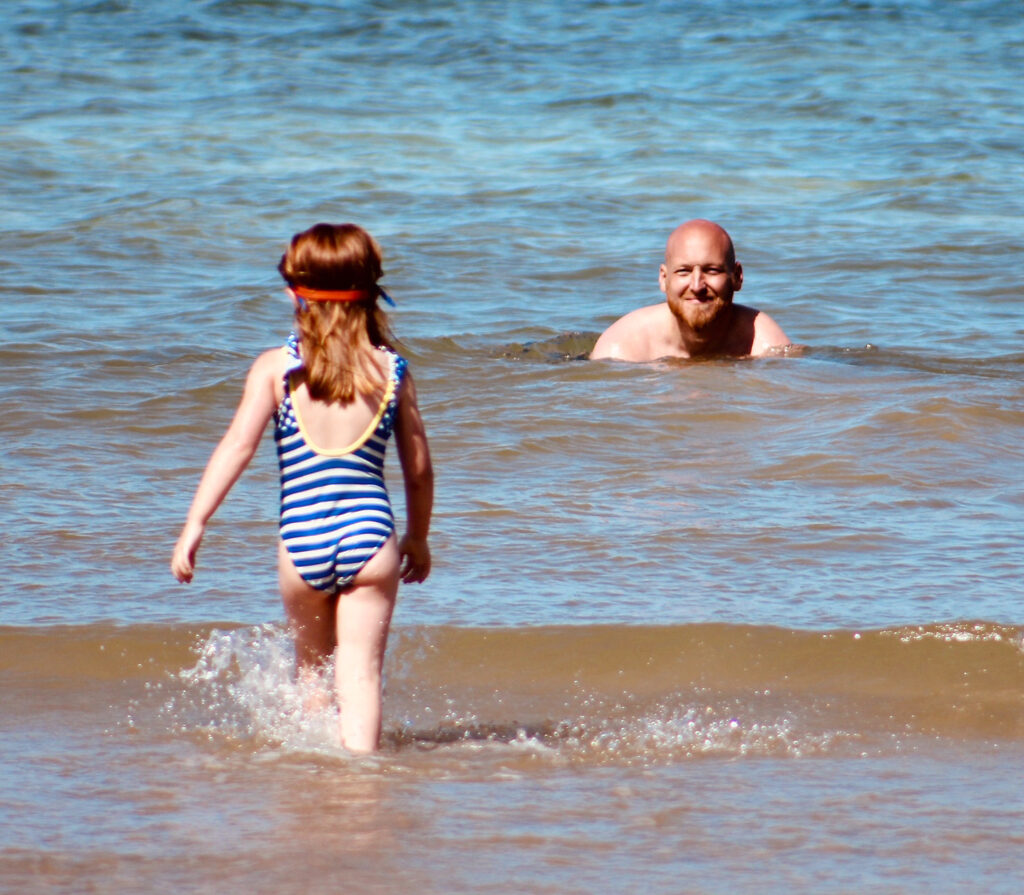National safety organisations initiate a campaign week every June to prevent drowning. This year (2020) they are encouraging people to take personal responsibility to stay safe by water or when swimming. As swimmers we urge people to safely enjoy swimming and playing around water. These are fun and healthy activities that can be safe in most locations by following advice: Be a responsible swimmer, know how to float if you fall in, check the risks, look after children and teach them about safety.
Drowning Prevention Week 12-19 June 2020 is a national campaign aiming “to help families stay water safe and be more aware of the potential dangers of swimming in lakes, rivers and the sea.… It is so important to remind people to stay safe and take personal responsibility near water, especially during these unprecedented times …encouraging even the most experienced swimmers to fully assess the risks.” (quotes from https://www.swimming.org/swimengland/drowning-prevention-week-2020/). For more details and resources, see Drowning Prevention Week, Royal Life Saving Society UK (RLSS UK)
[See this article, Understanding Drowning Statistics, which grew out of the page and this post, https://www.outdoorswimmingsociety.com/drowning-statistics/ ]
Swimming and playing around water is fun and healthy, and can be safe in most locations by following a few pieces of advice: Be a responsible swimmer, see the risks and learn how to be safe around water. If you fall in, float and call for help. If you’re planning to go in, see where you can get out, get in gradually rather than jumping first time, be aware of the cold, and look out for any other dangers. Look after any children or vulnerable people or non-swimmers, and teach them about safety.
If you manage a place with open water or have safety responsibilities, telling people to stay out of the water is usually unnecessary and it’s better to give practical advice to people on how they can stay safe, such as the Outdoor Swimming Society’s Top 10 tips for summer swim safety.
This page on this website on Landowner liability and swimmers might be useful.
The drowning prevention campaign is initiated nationally with local authorities and safety organisations, clubs, schools, and parents encouraged to take it up, and local media presenting stories based on the press releases. Sometimes these media reports have headlines that are rather misleading, and sometimes local organisations or authorities focus on particular places that they say are especially dangerous.
STAY SAFE better than “Stay out of the water”!
Although the original campaign is not in any way suggesting that people should not swim or go into or near water, that is sometimes the interpretation locally. Some local authorities, landowners or other organisations suggest that the only way people can stay safe is to keep out of the water. But giving practical advice about keeping themselves safe in or around water is likely to be much more effective than prohibition.
It’s much better for people to get into the open water, ideally within a supportive community – whether family, swimming group or some kind of organised activity or venue, or on their own – so that they can learn about outdoor water, see the risks, judge themselves and learn how to swim and enjoy the waters safely using readily available advice (as I argue in this swim safety article on this website)

The national campaign’s emphasis on people taking personal responsibility very much echoes the ethos of the Outdoor Swimming Society (Outdoor Swimmers Code, which also covers looking after the environment) and many local or organisations take a similar line. Swimmers will want to support efforts to prevent drowning, as any death is a tragedy, especially if it could have been prevented by more knowledge.
Safety advice:
The OSS top 10 tips for keeping safe in summer https://www.outdoorswimmingsociety.com/10-tips-for-summer-swim-safety/
What to do if you fall in – learn to Float To Live, RNLI, https://www.respectthewater.com/
Graphic safety advice from swimming website Hung out to Dry, https://www.hungouttodry.co.uk/wild-swimming-safety
Advice from the National Water Safety Forum, https://www.nationalwatersafety.org.uk/advice-and-information/open-water-swimming/
RoSPA advice to young people https://www.rospa.com/Leisure-Safety/Water/Advice/Children-Young-People/

Statistics
Detailed studies of accidental drowning statistics show that approximately half of those who drowned in water did not intend to go in – in other words they fell in. The vast majority are young men, and a high proportion of them had taken alcohol or drugs.
Those who drowned when swimming or playing in or near water are a small proportion of the total number. In 2018 – for which the numbers of deaths by drowning are broken down in more detail – out of the 263 accidental drownings, 34 (13%) were swimming, 17 (6%) were diving or jumping, 16 (6%) were playing in or beside water, and 93 (35%) were walking or running. The rest were doing a variety of things including angling, animal rescue, various sorts of boating etc. (WAID, https://www.nationalwatersafety.org.uk/waid/reports-and-data/)
There is a useful graphic, taken from the same statistical sources together with some others, in the RoSPA guidance, ‘Managing safety at inland waters guidance’ January 2019 (https://www.rospa.com/leisure-safety/water/inland/), p15, which compares the risks of swimming in open water with a range of other water and other activities. It puts clearly into perspective the low level of risk presented by outdoor swimming.

Statistics used in the national campaign
The RLSS UK (https://www.swimming.org/swimengland/drowning-prevention-week-2020/) is quoted: “Most people are surprised to learn that you are more likely to die from drowning in the UK than you are from being hit by a car or in a domestic fire.”
It is not clear where that information comes from. RLSS UK refers to 700 deaths by drowning each year, but they don’t give their sources. According to the WAter Incident Database (WAID), developed by the National Water Safety Forum that brings together all the key safety organisations, there were 214 accidental drownings in the UK in 2019, and 263 in 2018. (WAID, https://www.nationalwatersafety.org.uk/waid/reports-and-data/).
On a brief Internet search I found a reference to 200 deaths from domestic fires in 2019 and around 1780 deaths on the road.
Of course, any number of drownings is too many, and any efforts to prevent drowning are valuable. But ideally efforts should focus on the people and circumstances that pose most risk, and is most effective if it provides useful and constructive advice.
Some more detailed resources
RLSS UK, https://www.rlss.org.uk/Pages/Category/water-safety-information, including Don’t Drink and Drown, https://www.rlss.org.uk/pages/category/dont-drink-and-drown
National Fire Chiefs Council https://www.nationalfirechiefs.org.uk/Be-Water-Aware
National Water Safety Forum, https://www.nationalwatersafety.org.uk/advice-and-information/
Statistics from WAID, https://www.nationalwatersafety.org.uk/waid/reports-and-data/ (and explanation of WAID, https://www.nationalwatersafety.org.uk/waid/)
RoSPA guidance, ‘Managing safety at inland waters guidance’ January 2019, https://www.rospa.com/leisure-safety/water/inland/

[This post is now also a Page, under Issues, Safety]
